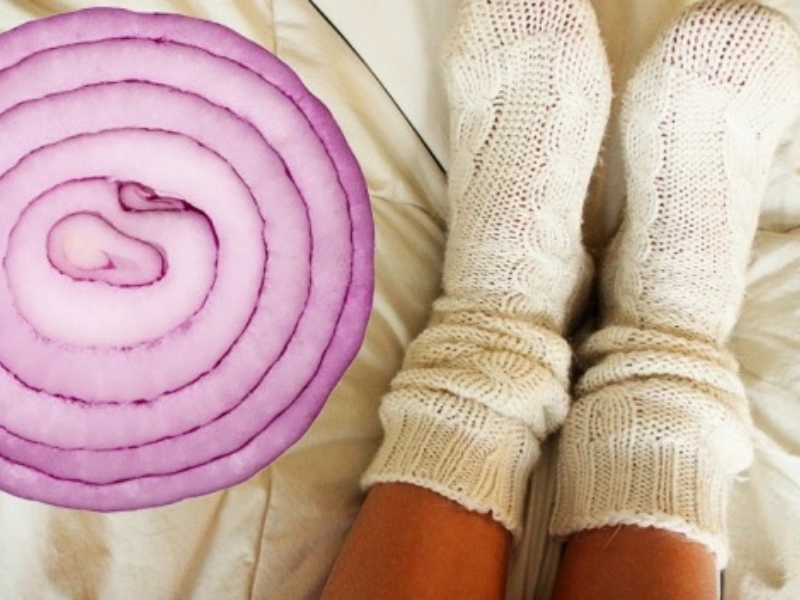Onion Socks: The Unusual Nighttime Routine She Swears By
2. The Science Behind Onion Socks

Examining the scientific characteristics of onions and their possible interactions with the human body will help one to grasp the possible effectiveness of onion socks. Rich in sulfur compounds, onions especially allicin account for their strong smell and many of their health advantages. The antibacterial, anti-inflammatory, and antioxidant qualities of these molecules have attracted much research. As with onion socks, it is hypothesised that when onion slices are pressed against the skin, these helpful chemicals may be absorbed transdermally. Given their many sweat glands and pores, the feet are thought to be a possible point of entrance for these compounds. Some supporters of the habit contend that wearing socks increases this absorption process by generating warmth.
Although the concept of receiving nutrients through the feet seems unreal, transdermal absorption of particular compounds has some scientific foundation. Numerous drugs, including hormone treatments and nicotine patches, use this kind of administration. It is noteworthy, nonetheless, that not all drugs may be readily absorbed via the skin and that absorption degree will vary much. Designed to guard the body from outside toxins, the barrier function of the skin can restrict the absorption of bigger molecules. Although there is little research especially on onion socks, studies on the topical use of onion extracts have revealed encouraging effects in other spheres. For example, skin application of onion extract has shown anti-inflammatory properties, which might help to explain some of the claimed advantages of onion socks.
The scientific community has also investigated possible systematic consequences of topically applied onion chemicals. Certain onion-derived compounds, according to some research, can pass through the epidermis and find their way into the bloodstream, maybe having effects all across the body. For some of the systemic advantages claimed by onion sock users—such as enhanced immune function or lower inflammation—this could offer a theoretical basis. It is noteworthy, therefore, that the concentration and bioavailability of these substances taken from onion socks could differ greatly from those under controlled settings in scientific research. More study is required to ascertain the precise processes and effectiveness of this approach.
Advertisement
You May Like

